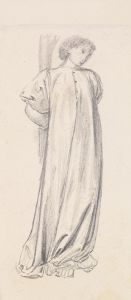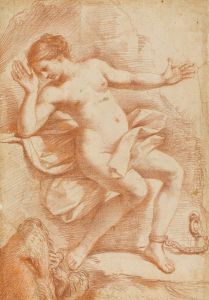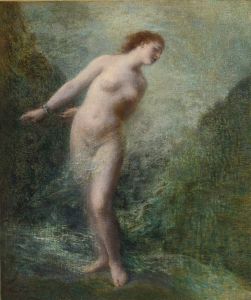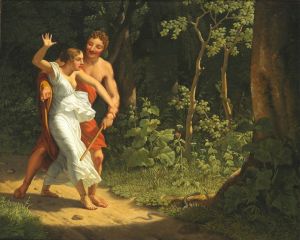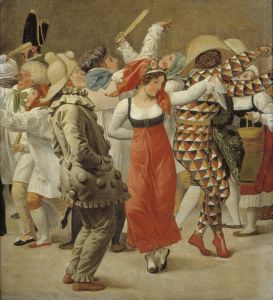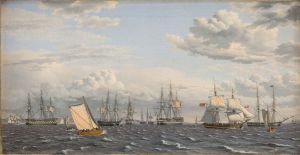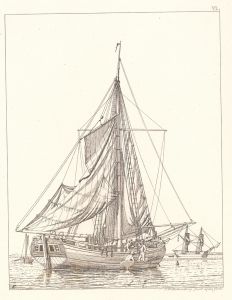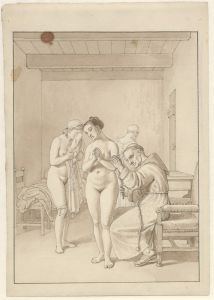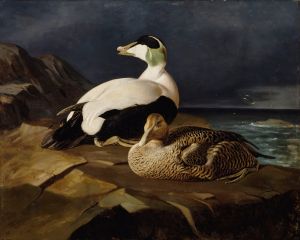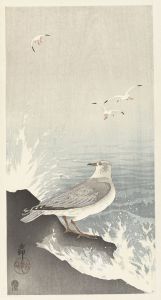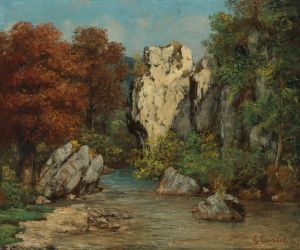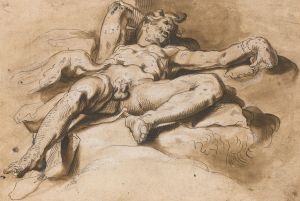
Andromeda chained up to a rock
A hand-painted replica of Christoffer Wilhelm Eckersberg’s masterpiece Andromeda chained up to a rock, meticulously crafted by professional artists to capture the true essence of the original. Each piece is created with museum-quality canvas and rare mineral pigments, carefully painted by experienced artists with delicate brushstrokes and rich, layered colors to perfectly recreate the texture of the original artwork. Unlike machine-printed reproductions, this hand-painted version brings the painting to life, infused with the artist’s emotions and skill in every stroke. Whether for personal collection or home decoration, it instantly elevates the artistic atmosphere of any space.
Christoffer Wilhelm Eckersberg, often referred to as the "father of Danish painting," created the artwork "Andromeda Chained to a Rock" in 1842. Eckersberg was a prominent figure in the Danish Golden Age of painting, and his works are celebrated for their clarity, attention to detail, and adherence to neoclassical principles. This particular painting is an excellent example of his skill in combining classical themes with a precise and realistic style.
The painting depicts the mythological scene of Andromeda, a character from Greek mythology. According to the myth, Andromeda was the daughter of Cepheus and Cassiopeia, the king and queen of Aethiopia. Cassiopeia boasted that her daughter was more beautiful than the Nereids, the sea nymphs, which angered Poseidon, the god of the sea. In retribution, Poseidon sent a sea monster, Cetus, to ravage the coast of their kingdom. To appease the monster and save their land, Andromeda was chained to a rock as a sacrifice.
Eckersberg's painting captures the moment of Andromeda's vulnerability and impending doom. She is depicted as a solitary figure, bound to the rock, with the vast sea stretching out behind her. The artist's use of light and shadow highlights her form and emphasizes her isolation in the dramatic landscape. The composition is carefully balanced, with Andromeda positioned centrally, drawing the viewer's eye directly to her plight.
Eckersberg's training and influences are evident in this work. He studied at the Royal Danish Academy of Fine Arts and later in Paris under Jacques-Louis David, a leading neoclassical painter. This background is reflected in Eckersberg's meticulous attention to anatomical accuracy and his use of classical themes. His time in Rome also influenced his work, where he was exposed to ancient art and Renaissance masterpieces, further shaping his artistic approach.
"Andromeda Chained to a Rock" is housed in the Statens Museum for Kunst (the National Gallery of Denmark) in Copenhagen. The painting is part of the museum's collection of 19th-century Danish art, which showcases the country's rich artistic heritage during this period. Eckersberg's work, including this painting, played a significant role in the development of Danish art, influencing subsequent generations of artists.
The painting not only exemplifies Eckersberg's technical skill but also reflects the broader cultural and artistic movements of the time. The neoclassical style, characterized by a return to classical ideals of beauty and form, was prevalent in Europe during the early 19th century. Eckersberg's work embodies these principles, with its emphasis on harmony, proportion, and the idealized human figure.
In summary, "Andromeda Chained to a Rock" by Christoffer Wilhelm Eckersberg is a significant work that illustrates the artist's mastery of neoclassical techniques and his ability to convey dramatic narratives through art. The painting remains an important piece within the Danish Golden Age of painting, highlighting Eckersberg's contribution to the art world and his lasting influence on Danish cultural history.





